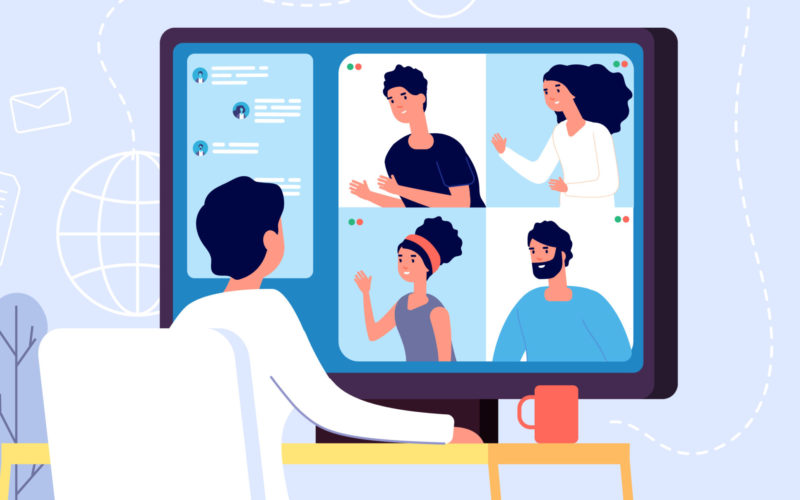Presenting over video conference is uniquely challenging. Unlike an in-person presentation, the presenter’s ability to read the room is limited, making it difficult to tell if your audience is following along or distracted. It is also incredibly easy for listeners to disengage by opening up another browser tab or catching up on their text messages. In this environment, maximizing the impact of presentations is critical to winning the attention of your listeners.
Here are a few pointers to level up your video presentation skills:
- Outline your narrative before building slides – I recommend writing down your presentation narrative in outline form and revising it multiple times before developing the slide content. Wait until you feel confident that you’ve built a powerful message with good main points and supporting evidence. Once the outline feels solid, translate the narrative into slides. I plan to write about developing a compelling narrative in a future article.
- Keep your content to less than 15 minutes of talking – Studies show that our attention span is about 18 minutes (Inc.com). After 18 minutes of listening, we lose our ability to absorb information, and we zone out. To be safe, I like to use 15 minutes as the maximum allowed time for speaking content. This time does not include playing supporting video content. If you have a particular nuanced topic that requires more than 15 minutes of taking, I recommend recruiting a second speaker and breaking the presentation into two sections. Using a second speaker allows you to overcome the 18-minute barrier.
- Record and time yourself – Use the voice memo app on your phone, or the video recorder, and record yourself practicing your presentation. For important meetings, I recommend practicing three times. You will be amazed at how much smoother and natural the content becomes when you practice. Recording yourself will also help you catch verbal ticks and superfluous words like “umm” and “like” that presenters insert during presentations. Record your actual live presentation and critique your performance to take it to the next level (it can be painful but eye-opening).
- Start and end presentations with your main point(s) – Capture your audience’s attention by telling them exactly where they are going from the first slide, even if it’s controversial. For example, if you want your client to adopt a new strategy to increase productivity by 50%, start with that on the first slide. Then spend the rest of the time supporting your main point(s) and sum it up at the end. Starting with the main point is more potent than slowly building toward it and losing your listener’s attention along the way.
- Keep your slide headings specific and powerful – Think of the slide title as the catchy advertisement for the slide content. If your slide shows that your product improved efficiency by 50% after three months, the slide heading should explicitly state this fact. Your readers will read the slide heading and understand the point of the slide. Avoid generic slide titles like “efficiency analysis” or “improved efficiency” that provide the audience with no specific information.
- Split your deck into two versions – Once you complete your full deck, create two versions: a shortened live presentation version and an offline version for your audience to read through later. Think of the offline” leave behind” version as the study guide for your presentation, and include additional content and denser slides. For the live version, try to limit yourself to 8 to 12 slides (not including the title and ending/thank you slide). Move additional supporting slides to the appendix for reference during Q&A.
- Remove excess text from your live presentation slides – People cannot listen to you speaking and read your slides simultaneously. That is why it’s best to leave paragraphs of text and large bulleted lists for your offline deck. A perfect slide is a compelling title and a powerful supporting graphic.
- Limit and test video content – If you are playing a video during your presentation, limit the length to ~1-minute. I also recommend appending the video to only the most critical part; set the video to start and end automatically. Before you present in a live environment, test the playback to make sure both the video and audio are working.
- Engage your audience – Ask your audience questions during the presentation to improve engagement and encourage people to speak up. For example, if you show them a new, improved business process, ask them for their initial thoughts, or how it compares to their current process. If you cover a particularly complex topic, ask your audience if they understand.
- Gather feedback – Send a survey to your audience, asking them to rate your presentation. I recommend a three-question survey with 1 to 10 ratings for an overall score, the delivery of the presenter, and the contents of the presentation. I also recommend a freeform box for additional comments.
I’d argue that the bar for an excellent video presentation is higher than a great in-person presentation. Now that presenting over video conference is the new normal, it is critical that presenters uplevel their skills and build simple, powerful, and compelling presentations. Otherwise, the content will fail to inspire, and audiences will not retain the information.
Next time you are preparing for a video presentation, try following the above ten tips, and gauge your audience’s response. You may be surprised at the difference!
